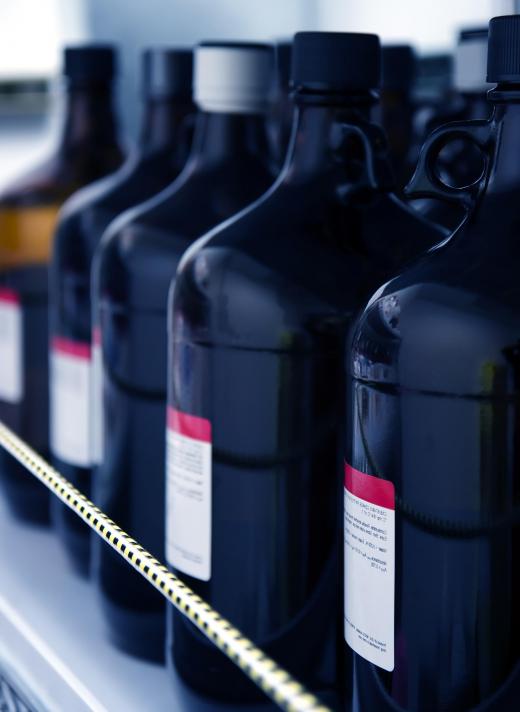What Is a Retardation Factor?
Retardation factor is a ratio that is often used in chemistry. Typically used in chromatography applications, it is generally expressed as a ratio of the distance traveled by a compound to that of a liquid solvent. The substances measured can be identified by use of light, which exposes substances in a solution mixed with a dye. Compound distance is usually divided by solvent distance in calculating the retardation factor. The values derived often depend on the nature of the solvent; moisture content, grain size, and thickness of the substrate; how much material is analyzed, as well as the temperature.
Thin Layer Chromatography (TLC) is one application in which the retardation factor is used. The value can then be included in the calculation of a sample’s Retention factor (Rf), which typically ranges from 0.0 to 1.0. Proteins are often classified this way, but a specific compound can have a different Rf depending on the moisture level or solvents in the mixture. With TLC, samples are often placed on the bottom of a glass, plastic, or aluminum plate during the stationary phase. The plate is then added to a solvent in a stage called the mobile phase, and the rate in which the sample moves can then be calculated.

Chemical compounds in groundwater are often monitored using retardation factor as well. The rate of groundwater movement is compared to the motion of contaminants as a ratio. Chemistry, the nature of the soil, and chemical reactions that take place in the process affect the retardation factor. Processes such as sorption, in which substances separate from the solution and concentrate in a material, such as soil, can also affect such motion. In water monitoring, this can cause contaminant levels to increase in soil, while they become lower in a given water sample.
Volumes of water are often sampled in laboratories using estimates of retention factor as well as other variables. These can be calculated mathematically, and then plotted on a graph to compare the behavior of a concentration to another aspect to identify trends. Depending on the method used, specific sizes of samples may be required. Soil is often analyzed this way, and costs can vary depending on the sample and what contaminants may be present.
Retardation factor is used in various applications, such as column chromatography and other sample analysis techniques. It can be used to track the movement of substances, contaminants, as well as individual molecules. Solvents moving through cellulose fibers in paper can be measured as well.
AS FEATURED ON:
AS FEATURED ON:











Discussion Comments
Why do we calculate the retardation factor?
Post your comments